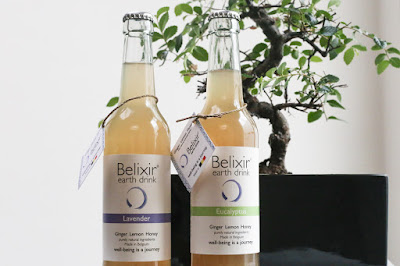I found an "insanely" natural beverage here in Belgium, almost by accident. It's called Belixir and it is produced locally by Christian and Stephen near Brussels.
These two guys follow traditional processes to make such an amazing drink.
Have a look at their website and read precious info about what it is and how it is produced.
I just tried Belixir in its two flavors, Eucalyptus and Lavender and I confirm that it is such a refreshing drink, due to some extremely healthy ingredients such as lemon and ginger. This last one actually gives that nice spicy flavor that is at times fresh and hot.
However, the most important characteristic of Belixir is the fact that there are no sugars added. Not even those that are supposed to be "sugars without sugar" like stevia or aspartame. Guess what makes Belixir also sweet? Honey, of course!
At the moment Belixir is produced and distributed locally in Belgium. In the near future they are planning to expand their market across all Belgium and hopefully Europe.
For now Belixir is selling at Belgomarkt (Rue de Dublin 19, 1050 Ixelles). And from mid June it will be selling at Shop&Go Delhaize (Avenue Louise 306, 1050 Ixelles) and I can finally find my stack at the price of 2.45 euro per bottle.
When you get yours, just remember to put it in the fridge. As I said, there are no chemicals added. Hence, it expires in about 6 months. Don't worry, that's enough to get a new stack in the fridge.
Belixir, well being is a journey, indeed!
For now Belixir is selling at Belgomarkt (Rue de Dublin 19, 1050 Ixelles). And from mid June it will be selling at Shop&Go Delhaize (Avenue Louise 306, 1050 Ixelles) and I can finally find my stack at the price of 2.45 euro per bottle.
When you get yours, just remember to put it in the fridge. As I said, there are no chemicals added. Hence, it expires in about 6 months. Don't worry, that's enough to get a new stack in the fridge.
Belixir, well being is a journey, indeed!










.jpg)












